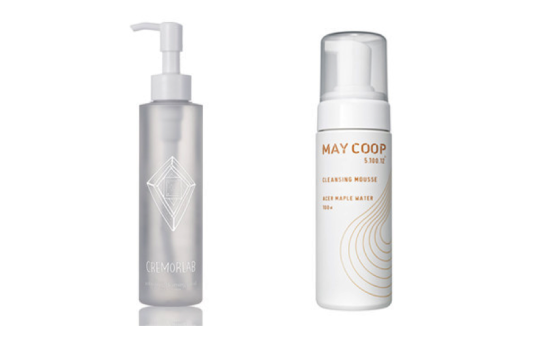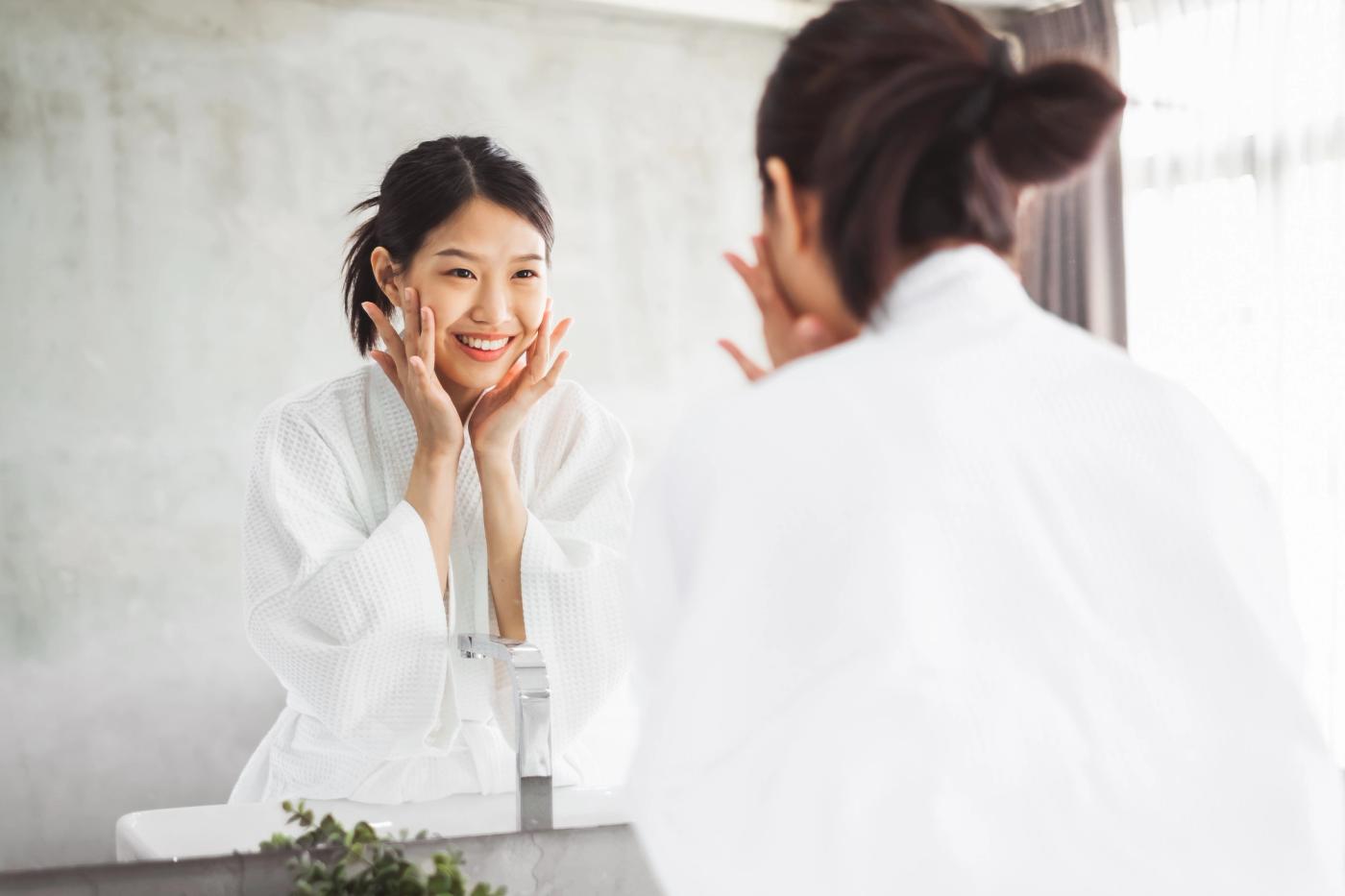Korean beauty and skincare regimens can be confusing – and completely overwhelming. We receive questions like, “where do I start?” or “what do I do for acne prone skin?” or “I don’t have time to do a 12-step Korean skincare routine, how can I still try to incorporate Korean beauty into my routine?”
With all the noise and clutter, we’re bringing it back to the basics for you.
Do I need 10-Steps?
There isn’t a 10-step Korean skincare routine. This isn’t a real thing that women in Korea go around saying or thinking. Some women may have 5 steps in their routine, others might have 20. The idea is that every routine is highly personalized that hyper-targets your skin type and skin concerns. We do have Korean Skincare Regimen Kits on our site for each skin type w/10 items each, not because the 10-steps is a real, mandatory concept, but because we wanted you to try 10 great products at value pricing that can really help improve your skin.
Instead of talking about the “10-steps” - since that’s not a real thing - let’s talk about the core principles of the Korean skincare philosophy.
**
1) Proper cleansing is half the battle:

Cremorlab T.E.N. Cremor Cleansing Gel Oil, $32, May Coop Cleansing Mousse, $32
In the AM - While you’re sleeping, your body metabolizes and can release oil and toxic buildup. When that interacts with the sun, free radicals can form quickly leading to skin damage. When you wake up, make sure to cleanse with a gentle oil cleanser to remove all that. Nothing fancy, just a small dab of your oil cleanser will do. Follow up with a gentle water-based cleanser to gentle wash face without stripping it dry.
In the PM - You (should) have SPF on, perhaps makeup on, and you’ve presumably been outside so there may be dirt and impurities on your skin. You don’t want any of that pushed into your skin. No matter how tired you are, being consistent with your cleansing goes such a long way. Again, nothing fancy is required here. Just make sure you have an oil-based cleanser that you’re using to gently coax off each layer of oil-based impurities (your SPF, makeup will likely have some oil) and all that sebum which traps dirt and impurities like sticky glue. Then, follow up with a gentle non-stripping water-based cleanser to gentle cleanse down to pores without irritating skin.
The cleansing rules - Two simple things: 1) Be consistent. Every AM and PM – no matter what. 2) Think layers. Using 2 cleansers - oil and water - allow you to gently coax layers off your face without harsh tugging or stripping your skin dry, both of which can disrupt the skin’s balance and cause irritation or damage your moisture barrier.
I remember when I attended skin school at age 18, my teacher told me a simple analogy that I’ll never forget:
“Your skin is like a sponge – when it’s dry and parched, it’s brittle. The sponge can crack when it moves, which can lead to infections more easily (read: acne) and more moisture to leak out of the skin. Also, when it’s dry, serums won’t absorb as well. Plus, your skin is going to look ‘thin’ and more ‘saggy.” Now, when your skin is well hydrated, everything works better. You’re actually creating an optimally healthy skin environment where your skin can keep improving from the inside-out. Not only does your skin look plumper and more dewy and your skincare absorb better – your skin functions better as a whole. Your moisture barrier is stronger and less moisture leaks out of skin and your skin keeps out bacteria better.”
Wow. All because of one simple thing – you kept your skin well hydrated.
Hydration/dehydration is a skin circumstance, which means it can be changed, and effort pays off. This is wholly different than your skin type (dry/oily/normal/combination), which is usually something that you’re born with and a bit harder to change, although products go a long way in helping to supply lipids to your skin if you have dry skin or curb sebum production if you have oily skin. However, you can have dehydrated, but oily-typed skin (the dehydration can in fact lead to potentially oilier skin as your skin overcompensates) or hydrated, and dry-typed skin.
So, how do you keep your skin hydrated?
Cremorlab Mineral Treatment Essence, $42, Mizon Hyaluronic Acid 100, $42, be the skin Nutrition Power Serum, $39, Shangpree Bitgoa Hue Rich Cream, $85
Try an essence - This goes on after toner and before serums. Very (usually) watery products that are specifically formulated to pack moisture into the dermis before anything else. They can have other ingredients that benefit the skin, but the whole point is to get that initial hydration into your skin to prep it for everything else, and to help create a better skin environment.
Use humectant-rich products - Hyaluronic acid is a current rockstar humectant, glycerin is also a good one - these water-loving ingredients help draw moisture from your body to your skin. Drinking a lot of water can help, but usually only if you drink 3-4 liters+ / day since your skin is the last organ the water reaches.
Use serums - Most moisturizers are formulated with large, occlusive particles to keep moisture sealed in. There may be nothing to “seal” in, if you didn’t get the hydration into your skin in the first place. Serums are formulated to actually deliver moisture into the skin, so don’t skip this step.
Find a good moisturizer - Now you did all that work and got your skin well hydrated. Seal it all in with a great moisturizer. Something that keeps your skin supple and doesn’t weigh it down – while sufficiently keeping all the goodies locked in. Winter days are more drying (more can evaporate out of the skin), and hence, heavier creams are well loved during the winter. And on humid summer days, a lightweight gel-based moisturizer may suffice. Just make sure it goes well for your skin type (eg. if you’re super dry, a cream that is a bit oilier can work well for you).
3) Prevent, prevent, prevent:
It’s much easier to prevent damage than to repair it. SPF is key. That said, SPF usually doesn’t give you 100% coverage. The UVA/UVB rays can cause a lot of free radicals to damage your skin (free radicals are your skin’s enemy). Antioxidants bind with these free radicals and can help fight them from damaging your skin (and your body). So, when you’re out in the sun (and everyday in general), make sure you’re using a product that is antioxidant-rich. They’re like the militia that scrappily fight off what gets through a usually vulnerable fort.
**
Are you still overwhelmed? It’s OK, we’re here to help! You can just “Ask Lily!” ;)
Ask Lily is our platform where you can email any one of our licensed cosmetologists or trained estheticians and get personalized skincare consultations and product recommendations. Just email us at hello@peachandlily.com. We’re here to empower you to take control of your skin.
**
Want to try Korean skincare before committing? Try our NEW K-Beauty MINIS on peachandlily.com.
Mizon All in One Snail Repair Cream Tube, $10, Mizon Good Night White Sleeping Mask Tube, $10, Mizon Mini Starfish Returning Cream, $10, Mini May Coop Raw Sauce, $14
If you’ve been wanting to try Korean skincare before committing to a full size product, we just launched our new trial and travel friendly sizes on our site. Been wanting to check out the much-buzzed-about Mizon All in One Snail Repair Cream? Heard great things about sleeping masks and want to try it out? What about starfish cream and cult favorite May Coop Raw Sauce? Check out the new mini sizes just in time for your new beauty routine and summer travel.
Cheers to radiance,
Alicia


